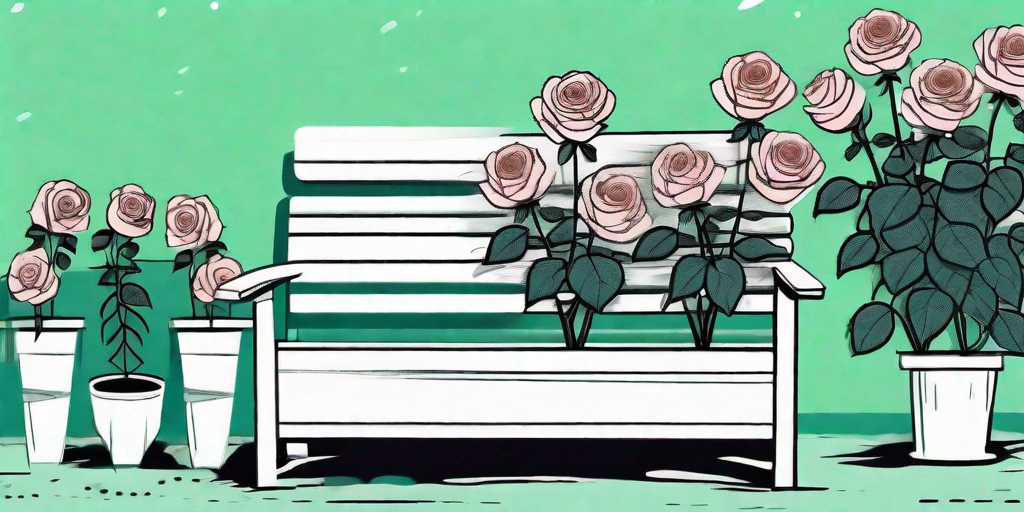
Ah, the rose, a symbol of love, beauty, and unfortunately, sometimes frustration. If you're a proud rose gardener who's been battling the notorious black spots on your roses, you've come to the right place. We're about to embark on a journey to eradicate this pesky problem once and for all. So, buckle up and get ready to kiss those black spots goodbye.
Understanding Black Spots on Roses
Before we dive into the nitty-gritty of getting rid of black spots, it's essential to understand what we're dealing with. Knowledge is power, after all, and in this case, it's the power to keep your roses spotless and healthy.
Black spot disease, caused by the fungus Diplocarpon rosae, is one of the most common and serious diseases in roses. It starts as small black spots on the leaves, which gradually enlarge and become ringed with yellow, eventually causing the leaves to drop. Not exactly the kind of decoration you want for your roses, right?
Why Do Black Spots Appear?
Black spots on roses are not a sign of your poor gardening skills, so don't beat yourself up. They're caused by a fungus that thrives in warm, humid conditions. So, if you live in a place where it's often warm and wet, congratulations, you've won the black spot lottery!
But, don't despair. Even if you're in the black spot hot zone, there are ways to manage and prevent this disease. And that's exactly what we're going to explore next.
How to Get Rid of Black Spots on Roses
Now that we've covered the basics of black spots, let's get down to business. Here's the game plan to reclaim your garden from the clutches of the black spot fungus.
Step 1: Prune Affected Leaves and Stems
First things first, get your pruning shears ready. It's time to do some surgical strikes on those black spots. Prune all the affected leaves and stems, making sure you're not leaving any behind. Remember, one infected leaf can spread the disease to the whole plant.
After pruning, make sure to clean up all the fallen leaves and debris. These can harbor the fungus and cause a new outbreak. So, be thorough and leave no leaf unturned!
Step 2: Apply Fungicide
Once you've pruned the affected parts, it's time to bring out the big guns - fungicides. Apply a fungicide specifically designed for black spot disease. Make sure to follow the instructions on the label for the best results.
Keep in mind that prevention is better than cure. So, even after the black spots are gone, continue applying the fungicide as a preventive measure.
Step 3: Improve Air Circulation
Remember how we said the black spot fungus loves warm and humid conditions? Well, one way to make your roses less inviting to the fungus is by improving air circulation. Plant your roses far enough apart to allow air to circulate freely. This will help keep the leaves dry and less susceptible to black spots.
Also, consider pruning the inner leaves and stems of the rose bushes to further improve air circulation.
Preventing Black Spots on Roses
Now that you know how to get rid of black spots, let's talk about how to prevent them in the first place. After all, wouldn't it be great if you never had to deal with them again?
Choose Resistant Varieties
Not all roses are created equal. Some varieties are more resistant to black spot disease than others. So, when planning your rose garden, consider choosing these resistant varieties. They might not make you immune to black spots, but they'll certainly give you a fighting chance.
Water Wisely
Watering is a crucial part of rose care, but if done incorrectly, it can contribute to black spot disease. Always water your roses at the base, not from above. Wet leaves are a breeding ground for the black spot fungus, so keep them as dry as possible.
Also, water your roses in the morning. This gives the water plenty of time to evaporate before the cooler evening hours, reducing the chances of fungal growth.
Frequently Asked Questions
Before we wrap up, let's address some of the most frequently asked questions about black spots on roses.
Can black spots kill roses?
While black spots are not directly fatal to roses, they can weaken the plants over time, making them susceptible to other diseases and pests. So, it's important to deal with black spots as soon as you notice them.
Can black spots spread to other plants?
Yes, black spots can spread to other roses and plants. The fungus can be carried by wind, rain, or even on your gardening tools. So, make sure to clean your tools after working with infected plants.
How often should I apply fungicide?
The frequency of fungicide application depends on the specific product and the severity of the disease. However, as a general rule, it's a good idea to apply fungicide every 7 to 14 days during the growing season.
And there you have it, folks! With this guide, you're now equipped to tackle black spots on roses head-on. So, get out there and reclaim your garden. Your roses are counting on you!















